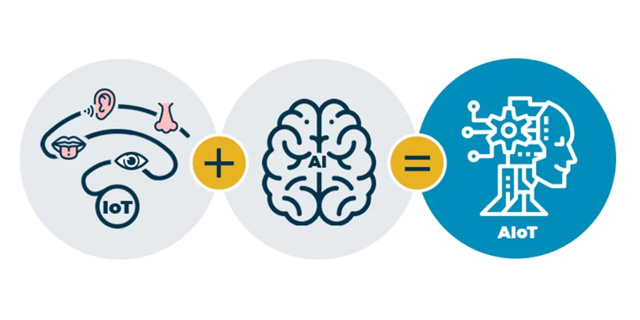With all the tech buzzwords floating around, it’s easy to get confused. You’ve probably heard of AI, IoT, and now, AIoT. But what exactly are they, and how are they different?
This article will help you understand the key differences between these technologies — in plain English, with real-life examples.
1. What Is AI?
AI (Artificial Intelligence) is the ability of machines to learn, analyze data, and make decisions, often in a way that mimics human thinking.
1.1. Examples of AI:
- A voice assistant like Siri or Alexa that understands and responds to your questions.
- A recommendation system on Netflix that suggests shows based on your viewing habits.
- A chatbot that can answer customer support questions.
AI doesn’t need to be connected to physical objects — it’s about thinking, learning, and solving problems.
2. What Is IoT?
IoT (Internet of Things) refers to physical devices that are connected to the internet and can send or receive data.
2.1. Examples of IoT:
- A smart thermostat that can be controlled from your phone.
- A fitness tracker that logs your steps and sleep data.
- A smart fridge that sends alerts when you’re low on milk.
These devices are good at collecting and sharing data, but they don’t make decisions on their own — they wait for user commands or cloud instructions.
3. So, What Is AIoT?
AIoT (Artificial Intelligence of Things) is the fusion of AI and IoT. It combines intelligence (AI) with connectivity (IoT), creating smart systems that can:
- Sense their environment,
- Analyze data in real time,
- Make decisions, and
- Take action automatically.
4. Key Differences Between AI, IoT, and AIoT
| Feature | AI | IoT | AIoT |
|---|---|---|---|
| Intelligence | Yes | No | Yes |
| Connectivity | Optional | Yes | Yes |
| Physical devices | Not required | Yes | Yes |
| Real-time decisions | (if trained) | (needs input) | Yes |
| Example | ChatGPT, Netflix recommendations | Smart bulb, fitness tracker | Smart camera, self-driving car |
5. Real-Life Analogy
Let’s say you have a security system:
- IoT: Your doorbell camera sends video to your phone. You decide what to do.
- AI: Software can detect a person or object in a video — but it needs to be installed on a server or app.
- AIoT: The camera recognizes faces, detects suspicious behavior, and automatically sounds an alarm or notifies you — without human input.
6. Why Is AIoT More Powerful?
By bringing AI directly into IoT devices, we move from data collection to intelligent action. AIoT is:
- Faster – No need to wait for cloud processing.
- Smarter – Learns and improves over time.
- More efficient – Reduces the need for human control.
7. Conclusion
Understanding the difference between AI, IoT, and AIoT is key to seeing how modern technology works together.
- AI gives machines the ability to think.
- IoT connects devices to share data.
- AIoT merges the two, creating intelligent, connected systems that can sense, think, and act.


